Some fancy goldfish can lead long, healthy, normal lives. Others, like their over-bred cat and dog compatriots, can develop genetic disorders that have no ideal treatment. Meet our little buddy, Rusty (top):
Back when he was little, he had no issues. Swimming and eating normally, being a happy little fish with his tankmates, Cupcake (bottom right) and Zhen Zhen (bottom left). However, a few months ago, we noted that Rusty was having trouble getting to the top of his tank. This progressed to where he started to lie on his side on the bottom for long periods of time. He was able to swim up to the top for meals, and eventually graduated to hand feeding.
In order to better see what was going on inside Rusty, we set up an appointment for x-rays. What we found was that his swim bladder had shifted to one side of his body, and due to his increasing size and girth, made it impossible for the swim bladder to inflate enough.
So, for a long-term solution, we needed to figure out a way to help Rusty swim. We have rigged temporary suspension systems for goldfish before, but never as a potential long-term treatment. The little guy pictured below had undergone neurologic damage secondary to a severe ammonia spike. A couple of weeks on the float, and he was able to recover.
This guy was rigged up using a block of styrofoam and a length of suture through his back. However, this was only a temporary setup. Rusty’s would have to be more long-term. So, our vet team sprung into action!
A small strip of plastic was threaded through Rusty’s dorsal fin and tied behind his pectoral fins. Several attempts had to be made in order to find a place where the strap would stay on and not interfere with his swimming. Then, a small sytrofoam peanut, donated by UPS Store #6455 in the same plaza as Aquatic Veterinary Services, was tied onto the strap.
Obviously, one peanut is much to buoyant for this tiny fish, so the peanut was gradually trimmed down.
For right now, he is still a little too positively buoyant, but our vet staff wanted to give him some time to get used to his new apparatus before learning to swim again. You can come meet Rusty at our Scales & Tails event this Saturday from 5p-9p. For more information, please see our Event Page.
We will keep you updated on his progress!

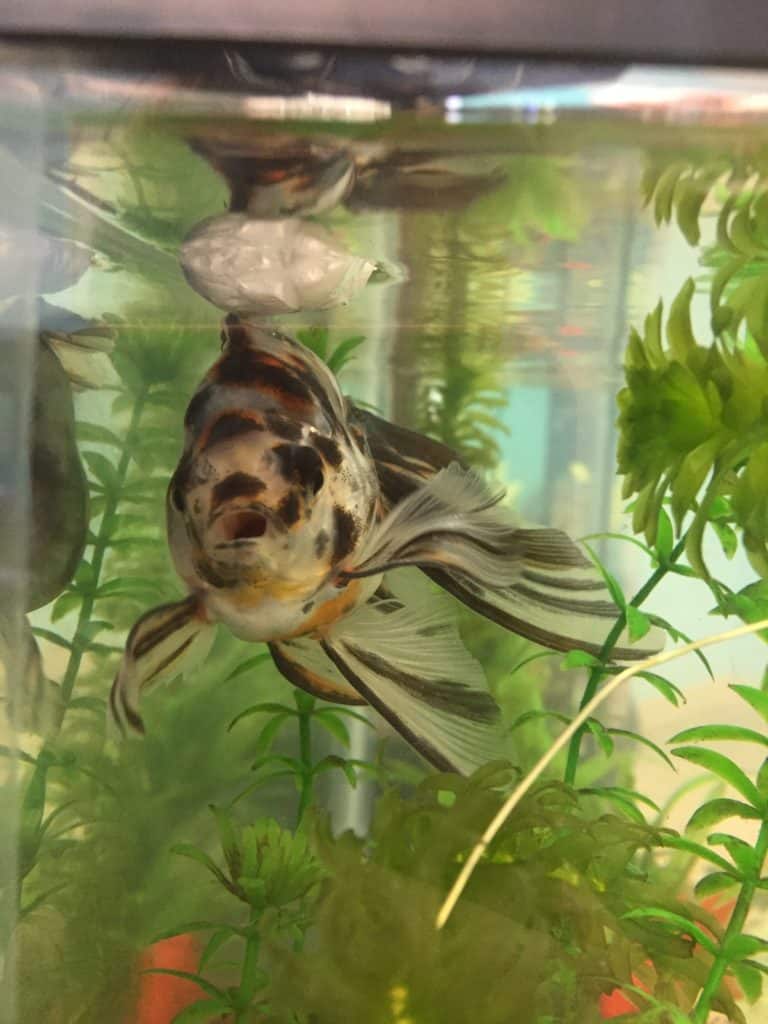
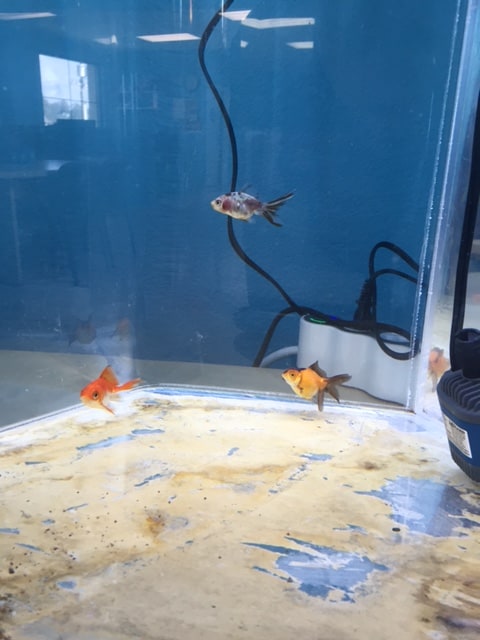
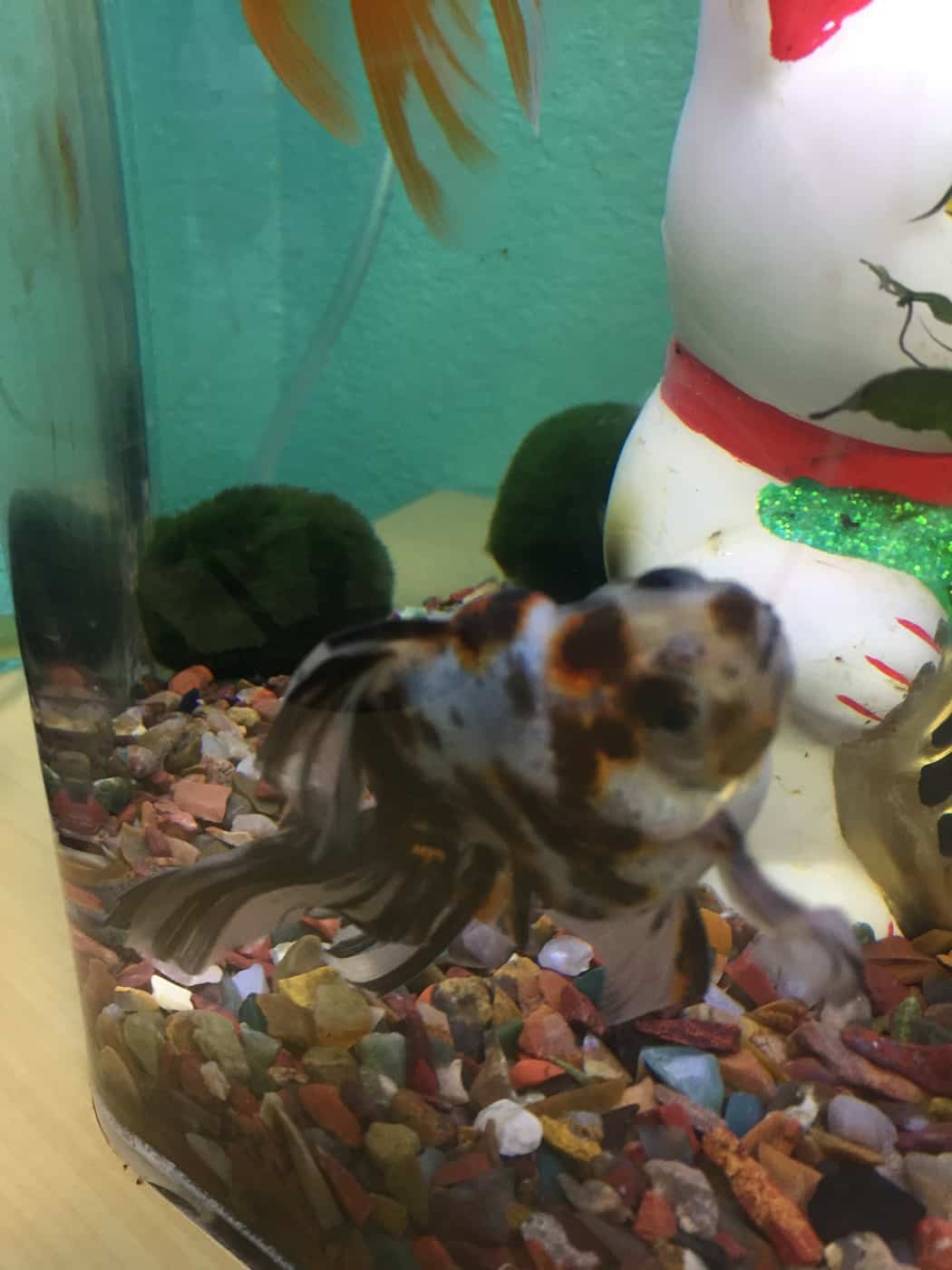
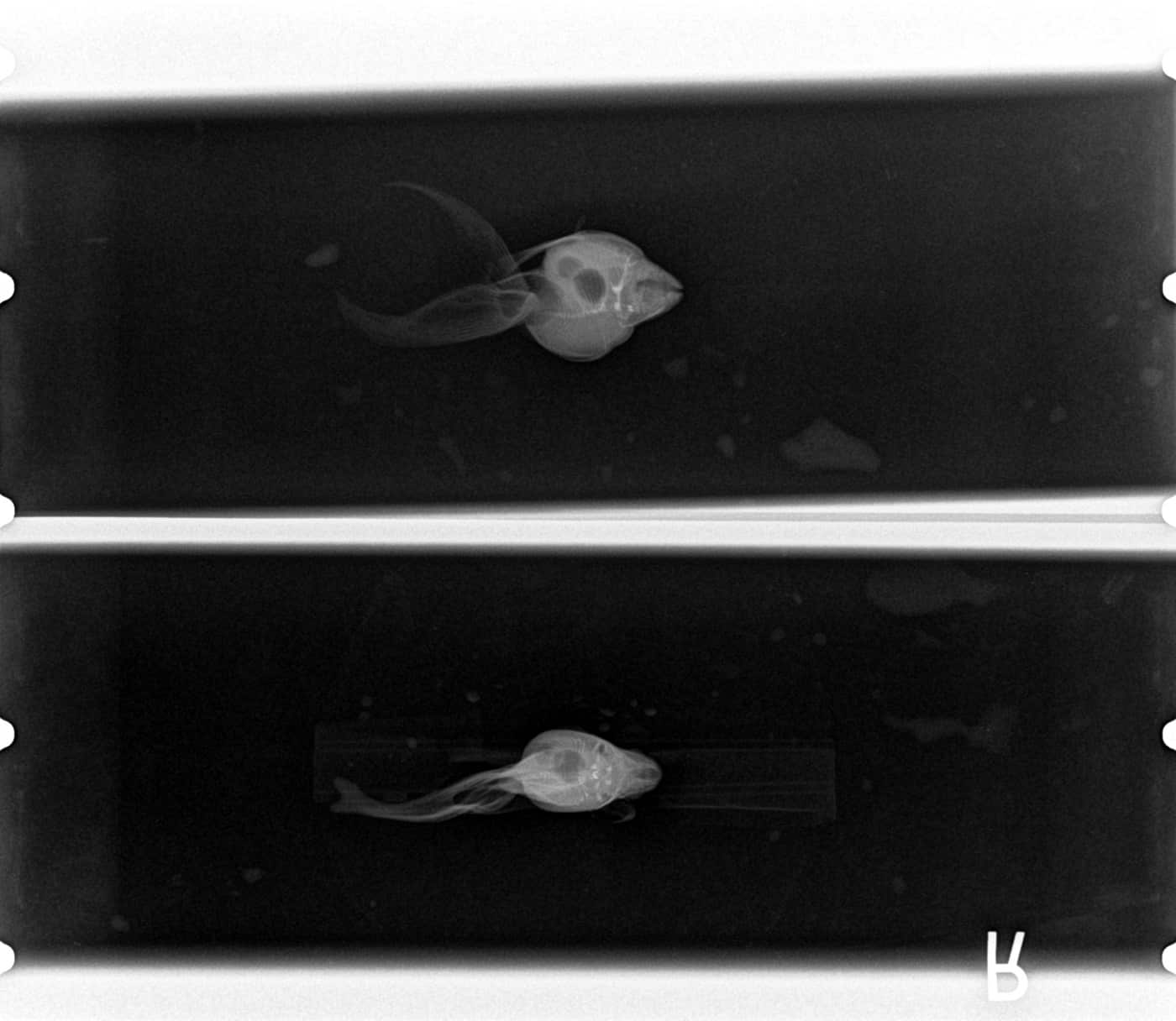
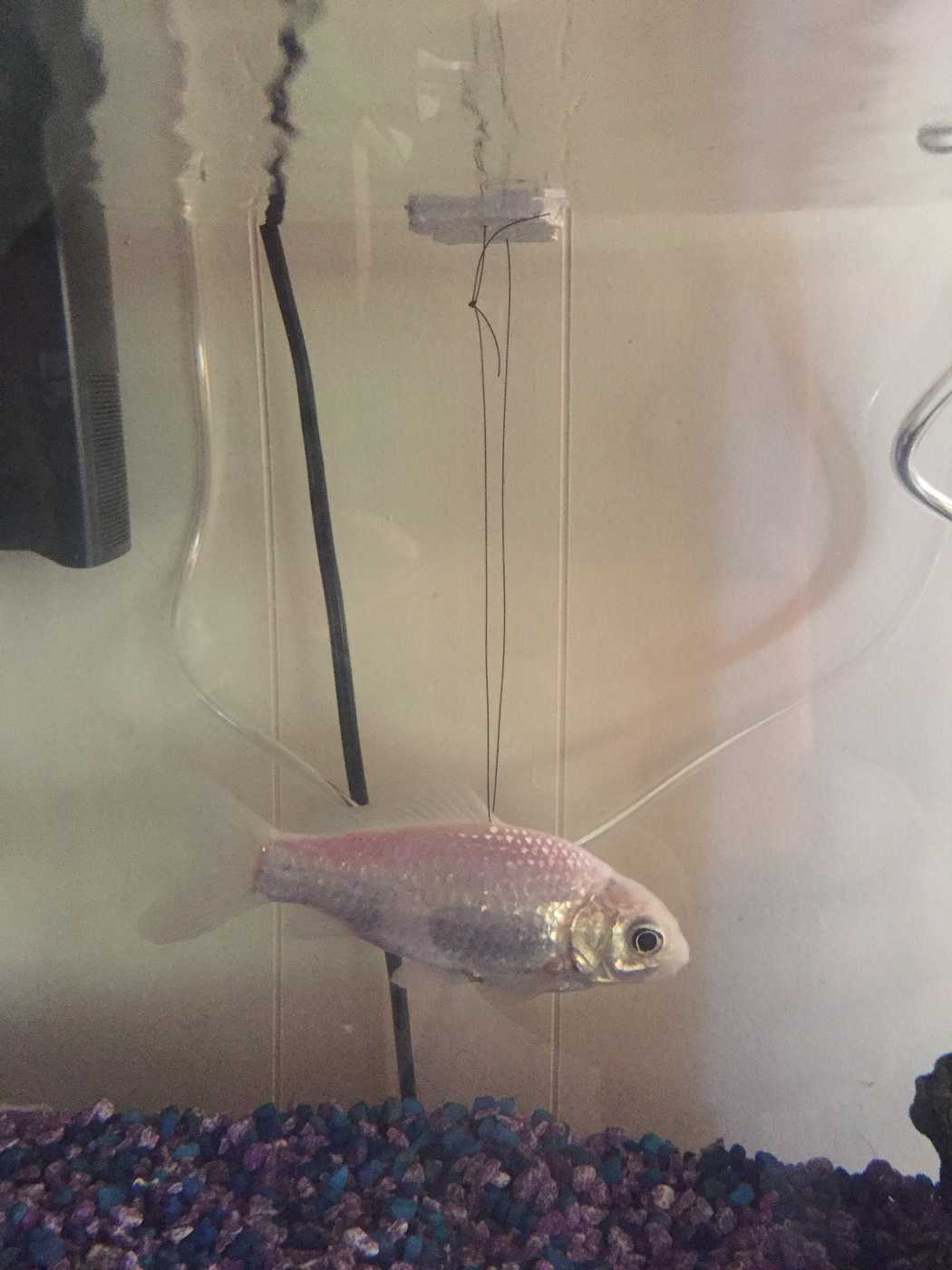
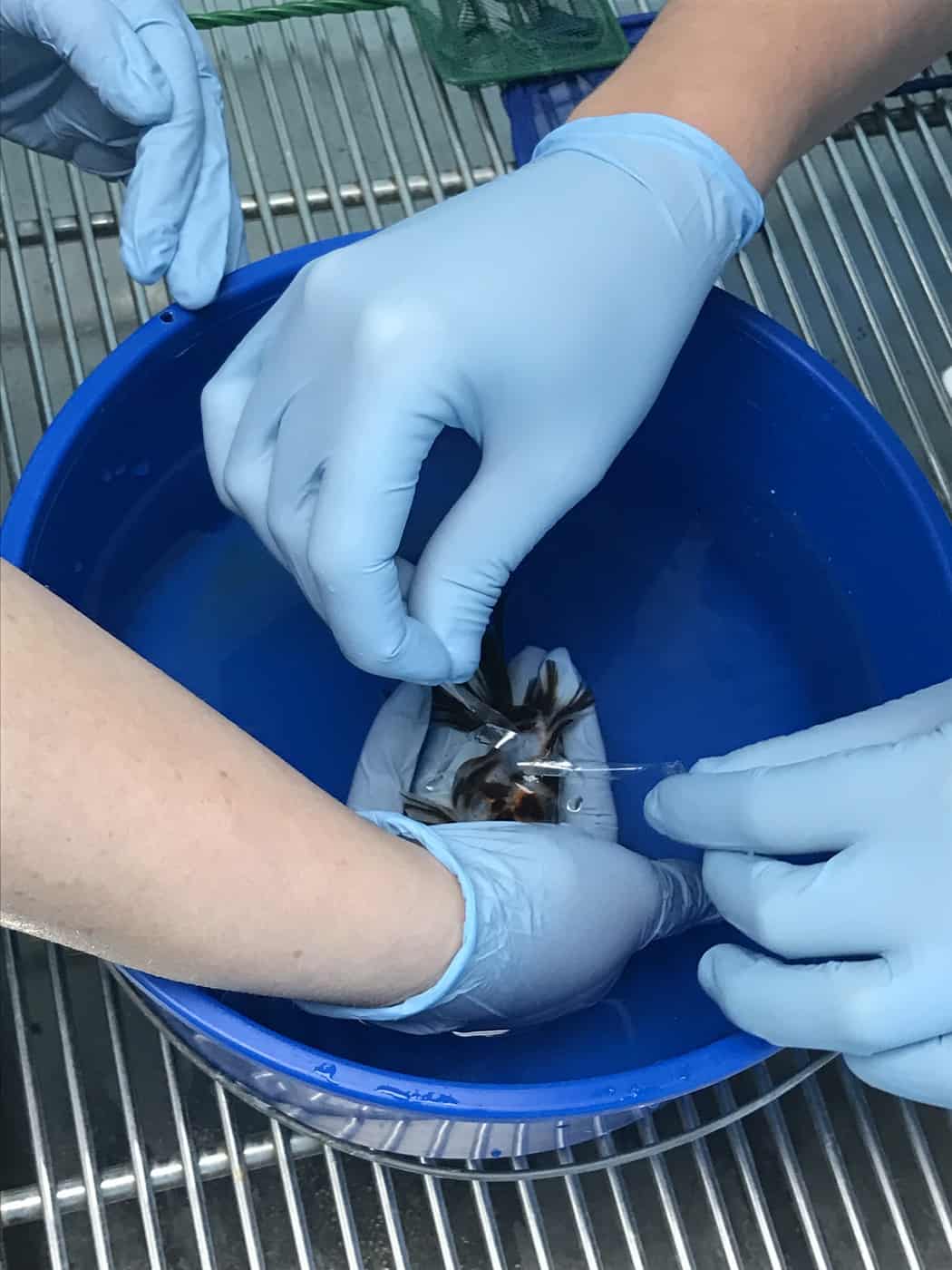
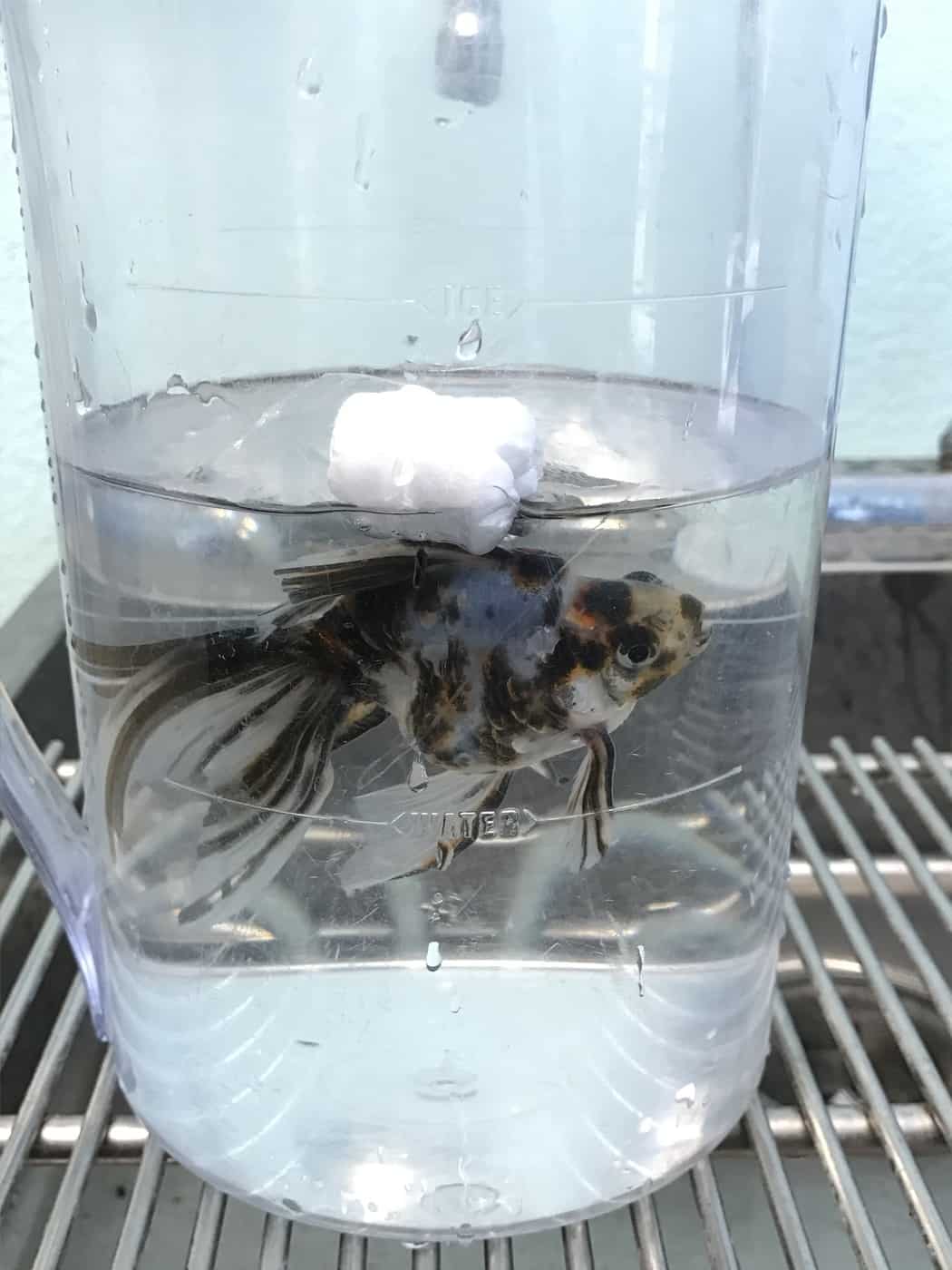
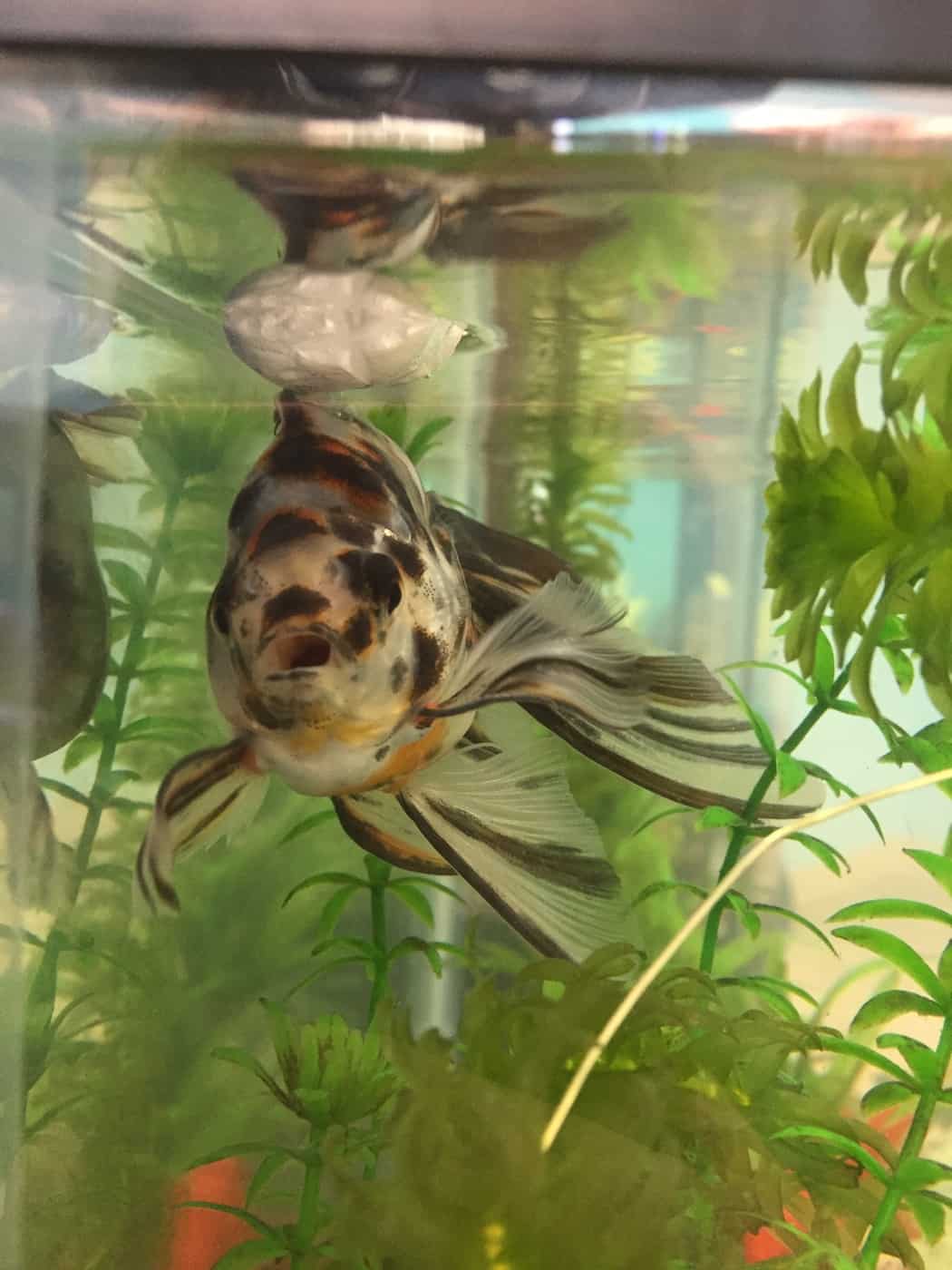
Pingback: Fish X-Rays – Aquatic Veterinary Services
Pingback: Swim Bladder Disease – Aquatic Veterinary Services
Hello, how many weeks or months is the float kept on the fish if it’s for long-term treatment like Rusty’s case?
It depends on the fish. Some stay on for only a few days, others a few weeks.
What happens afterwards (after a few weeks)? Is it possible to let the fish keep the floating device for the rest of its life?
These devices are only meant to be used short-term. If the swim bladder is unable to inflate further, the fish will be negatively buoyant for the rest of his life. With some minor lifestyle modifications, they can live a long and happy life on the bottom.